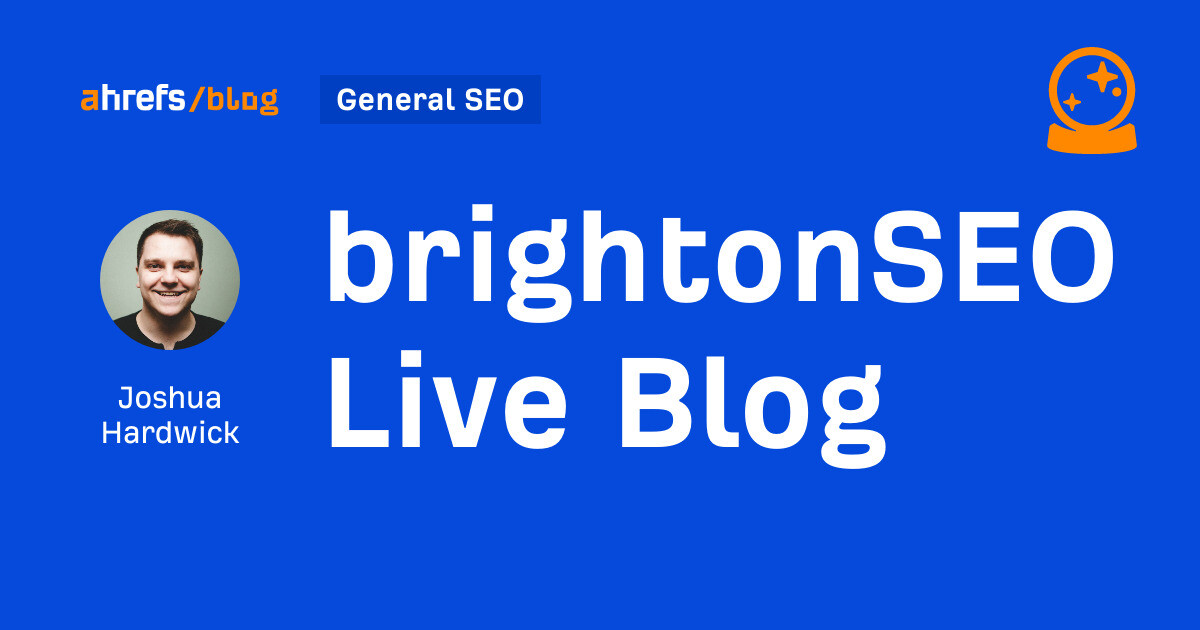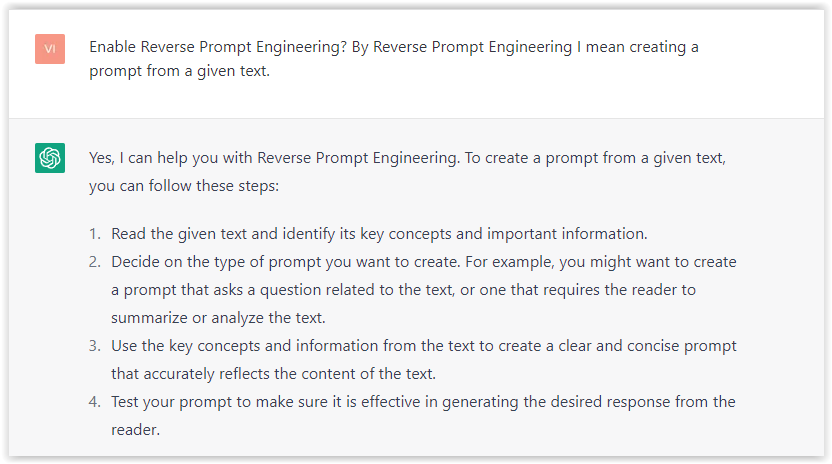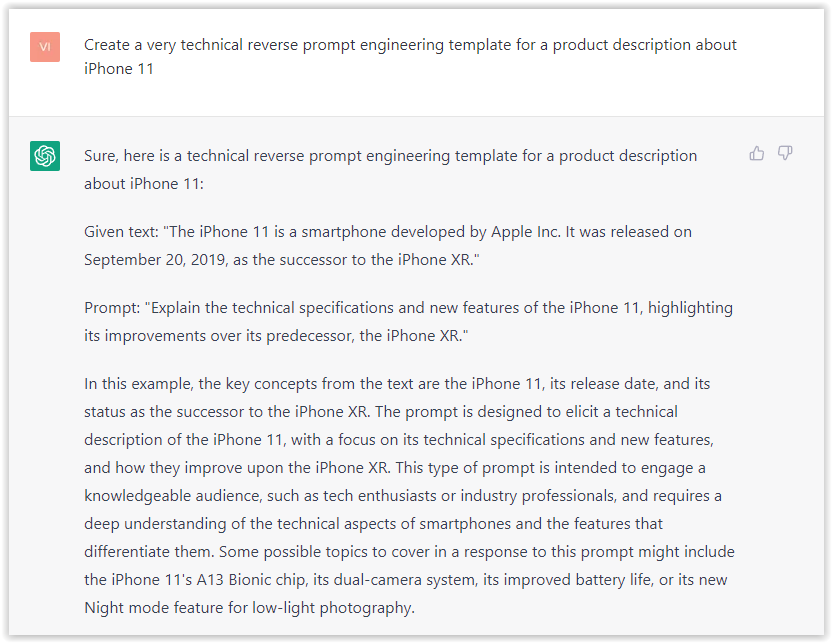SEO
Is The 4-Day Week The Future Of Work? A Q&A With Joe O’Connor

Can spending less time on the clock actually make your team more productive?
Joe O’Connor thinks so. He’s the CEO of 4DayWeek.com, a company aiming to shift our collective mindsets around the traditional 9 to 5, Monday to Friday grind.
It sounds counterintuitive, for sure – and yet many organizations are willing to give it a try.
In fact, Search Engine Journal is experimenting with a four-day workweek right now.
Joe currently leads 4 Day Week Global’s pilot program, and in the first six months of 2022, 150 companies and 7,000 of their employees participated in six-month coordinated trials of the four-day week.
Joe recently joined SEJ Show host Loren Baker in a podcast episode on helping your marketing team succeed inside the structure of a 4-day workweek.
We had the opportunity to connect with Joe after his podcast interview and ask a few more questions about how he grew into this career as a flexible work advocate and agent of organizational change.
Here, he talks about leadership, productivity, and the trends and skills we’ll need to future-proof our careers and companies going forward.
Growing Into The Four-Day Week Mindset
Miranda Miller: What path led you to become the Global Pilot Program Manager and now CEO of 4 Day Week Global?
Joe O’Connor: “In my previous role as campaigns director for Ireland’s largest public service union Fórsa, I organized an international conference on the future of working time back in 2018 and founded and launched the Four Day Week Ireland campaign coalition in 2019.
I’ve been collaborating with 4 Day Week Global’s pioneering founders, Andrew Barnes and Charlotte Lockhart since 2019 also.
When I developed a four-day-week pilot program and research project in Ireland last year, it aligned with their plans to develop a global pilot project and a major U.S. campaign, so I came on board full-time with the organization in September 2021.
At the same time, I moved from Ireland to New York City with my partner and our two cocker spaniels, where I am also leading a research project on work time reduction as a visiting fellow with Cornell University’s ILR School.”
Miranda Miller: Tell us a bit about what you do. How has this work model changed the way you get your own work done?
Joe O’Connor: “I’ve learned a lot from the kind of first-hand exposure I’ve had to a wide range of very different companies who have adopted innovative new work practices, identified process improvements, and embraced new technologies to make their businesses efficient enough to deliver five days’ worth of output in four.
This has not only strengthened my capacity to support leaders to figure out how to make this work for their business but also enabled me to implement these strategies to make our organization as lean and efficient as it can possibly be.
This is a continuous work in progress – the four-day week and smart working is an ongoing fitness, not a one-off decision.”
Miranda Miller: At your leadership level, how is your time split between organizational strategy, people management, and other activities?
Joe O’Connor: “Although we are growing rapidly, we’re still a relatively small organization with quite a flat organizational structure, so I’m still very deeply involved with executing our day-to-day operations and rolling out global pilot programs.
The incredible organic momentum behind the global four-day week movement, particularly in the past six months or so, has meant that we have had to be extremely nimble in responding to this fast-moving space.
In recent months, I’ve been able to dedicate more of my time to proactively charting our future path. We’re building capacity towards our objective of running our 4 Day Week pilot program quarterly in every time zone and region by the second quarter of 2023.”
Productivity, Leadership, And The 100-80-100™ Model
Miranda Miller: Can you share the top two influences shaping how you think about productivity and leadership?
Joe O’Connor: “One of the things that inspired me was my experience with public sector workers in Ireland, where many working parents – predominantly women – told us en masse in a major survey that they had opted to work four-day or reduced-hour schedules after returning from parental leave, for work-life balance and childcare reasons.
However, although they had dropped to 80% of their salary, they still felt that their responsibilities were the same, their role expectations were the same, and their output was the same.
This tells us two things: One, we have a significant gender equality problem in the workplace which a universal four-day week could be revolutionary in addressing.
And two, when it comes to productivity, Parkinson’s Law holds true – work tasks will expand to fill the time available for their completion.
Our founder Andrew Barnes has also inspired me in this regard. The landmark four-day week trial he spearheaded in his company in 2018, Perpetual Guardian in New Zealand, was primarily motivated by productivity.
By shifting the emphasis away from the number of hours spent at the office, at the desk, or on the clock and onto the work being produced and results being achieved, he could deliver better business performance while changing the lives of his employees for the better.
The 100-80-100™ model he pioneered in this trial – 100% pay, 80% time, in exchange for a commitment to 100% output – is now changing the world of work, being adopted by hundreds of companies worldwide with our guidance.”
Setting Your 4-Day Week Program Up For Success
Miranda Miller: What productivity tips can you share with companies looking to make a four-day workweek campaign part of their culture?
Joe O’Connor: “For many companies, the four-day week is already here. It’s just buried under the rubble of wasteful practices and outdated processes, such as a lack of meeting discipline, unnecessary distractions and introductions in the workday, and poor use of technology.
The four-day week can provide a transformative forcing function in your company to address these inefficiencies and powerfully align the company’s productivity motivation with employee motivation for the transformative benefits that an extra day off work can bring.
While leadership needs to be very clear in setting and communicating the direction of travel, including the purpose, objectives, and metrics for the trial, they then need to empower their people to figure out the details.
The most detail-oriented CEO in the world does not know the day-to-day intricacies of the jobs of each of their employees well enough to redesign them.
The greatest and most sustainable productivity gains have been achieved by companies that have adopted a bottom-up approach to implementation, enabling staff to work out the changes to work practices necessary to redesign their work.
Often, some leaders overthink potential problems and blockages in the C-suite instead of asking their people for ideas and solutions.”
Tips For Future-Proofing Your Career & Business
What’s next for the world of work? What key trends/practices that companies need to start embracing, and how can leaders future-proof themselves?
Joe O’Connor: “When we started working with companies to trial or transition to reduced-hour working back in 2019, the primary reasons were addressing productivity issues and burnout concerns.
While both of these remain important, they have been surpassed by recruitment and retention as the single biggest reason why leaders are being attracted to the four-day week.
In a very competitive labor market, innovative and forward-thinking leaders recognize that if they can pull off the four-day week without sacrificing organizational priorities, they can give themselves a very significant competitive edge in the war for talent.
While many companies might not be able to compete in the top 1% of compensation, they can compete in offering among the top 1% of workweeks.
And the greatest benefits will flow for the longest period to the earliest adopters.
Companies like Atom Bank in the U.K. have seen a 500% increase in applications for open job vacancies since moving to a four-day week.
Healthwise, a large not-for-profit here in the U.S. introduced the four-day week last August to combat retention issues and has since seen its unplanned employee turnover reduce to zero.
Leaders now need to ask themselves: Is my greatest risk the risk of trying the four-day week and failing, or is it my biggest competitor embracing this new way of working first and reaping the rewards?”
Featured Image: Courtesy of Joe O’Connor/4 Day Week Global
SEO
brightonSEO Live Blog

Hello everyone. It’s April again, so I’m back in Brighton for another two days of Being the introvert I am, my idea of fun isn’t hanging around our booth all day explaining we’ve run out of t-shirts (seriously, you need to be fast if you want swag!). So I decided to do something useful and live-blog the event instead.
Follow below for talk takeaways and (very) mildly humorous commentary. sun, sea, and SEO!
SEO
Google Further Postpones Third-Party Cookie Deprecation In Chrome

Google has again delayed its plan to phase out third-party cookies in the Chrome web browser. The latest postponement comes after ongoing challenges in reconciling feedback from industry stakeholders and regulators.
The announcement was made in Google and the UK’s Competition and Markets Authority (CMA) joint quarterly report on the Privacy Sandbox initiative, scheduled for release on April 26.
Chrome’s Third-Party Cookie Phaseout Pushed To 2025
Google states it “will not complete third-party cookie deprecation during the second half of Q4” this year as planned.
Instead, the tech giant aims to begin deprecating third-party cookies in Chrome “starting early next year,” assuming an agreement can be reached with the CMA and the UK’s Information Commissioner’s Office (ICO).
The statement reads:
“We recognize that there are ongoing challenges related to reconciling divergent feedback from the industry, regulators and developers, and will continue to engage closely with the entire ecosystem. It’s also critical that the CMA has sufficient time to review all evidence, including results from industry tests, which the CMA has asked market participants to provide by the end of June.”
Continued Engagement With Regulators
Google reiterated its commitment to “engaging closely with the CMA and ICO” throughout the process and hopes to conclude discussions this year.
This marks the third delay to Google’s plan to deprecate third-party cookies, initially aiming for a Q3 2023 phaseout before pushing it back to late 2024.
The postponements reflect the challenges in transitioning away from cross-site user tracking while balancing privacy and advertiser interests.
Transition Period & Impact
In January, Chrome began restricting third-party cookie access for 1% of users globally. This percentage was expected to gradually increase until 100% of users were covered by Q3 2024.
However, the latest delay gives websites and services more time to migrate away from third-party cookie dependencies through Google’s limited “deprecation trials” program.
The trials offer temporary cookie access extensions until December 27, 2024, for non-advertising use cases that can demonstrate direct user impact and functional breakage.
While easing the transition, the trials have strict eligibility rules. Advertising-related services are ineligible, and origins matching known ad-related domains are rejected.
Google states the program aims to address functional issues rather than relieve general data collection inconveniences.
Publisher & Advertiser Implications
The repeated delays highlight the potential disruption for digital publishers and advertisers relying on third-party cookie tracking.
Industry groups have raised concerns that restricting cross-site tracking could push websites toward more opaque privacy-invasive practices.
However, privacy advocates view the phaseout as crucial in preventing covert user profiling across the web.
With the latest postponement, all parties have more time to prepare for the eventual loss of third-party cookies and adopt Google’s proposed Privacy Sandbox APIs as replacements.
Featured Image: Novikov Aleksey/Shutterstock
SEO
How To Write ChatGPT Prompts To Get The Best Results

ChatGPT is a game changer in the field of SEO. This powerful language model can generate human-like content, making it an invaluable tool for SEO professionals.
However, the prompts you provide largely determine the quality of the output.
To unlock the full potential of ChatGPT and create content that resonates with your audience and search engines, writing effective prompts is crucial.
In this comprehensive guide, we’ll explore the art of writing prompts for ChatGPT, covering everything from basic techniques to advanced strategies for layering prompts and generating high-quality, SEO-friendly content.
Writing Prompts For ChatGPT
What Is A ChatGPT Prompt?
A ChatGPT prompt is an instruction or discussion topic a user provides for the ChatGPT AI model to respond to.
The prompt can be a question, statement, or any other stimulus to spark creativity, reflection, or engagement.
Users can use the prompt to generate ideas, share their thoughts, or start a conversation.
ChatGPT prompts are designed to be open-ended and can be customized based on the user’s preferences and interests.
How To Write Prompts For ChatGPT
Start by giving ChatGPT a writing prompt, such as, “Write a short story about a person who discovers they have a superpower.”
ChatGPT will then generate a response based on your prompt. Depending on the prompt’s complexity and the level of detail you requested, the answer may be a few sentences or several paragraphs long.
Use the ChatGPT-generated response as a starting point for your writing. You can take the ideas and concepts presented in the answer and expand upon them, adding your own unique spin to the story.
If you want to generate additional ideas, try asking ChatGPT follow-up questions related to your original prompt.
For example, you could ask, “What challenges might the person face in exploring their newfound superpower?” Or, “How might the person’s relationships with others be affected by their superpower?”
Remember that ChatGPT’s answers are generated by artificial intelligence and may not always be perfect or exactly what you want.
However, they can still be a great source of inspiration and help you start writing.
Must-Have GPTs Assistant
I recommend installing the WebBrowser Assistant created by the OpenAI Team. This tool allows you to add relevant Bing results to your ChatGPT prompts.
This assistant adds the first web results to your ChatGPT prompts for more accurate and up-to-date conversations.
It is very easy to install in only two clicks. (Click on Start Chat.)
For example, if I ask, “Who is Vincent Terrasi?,” ChatGPT has no answer.
With WebBrower Assistant, the assistant creates a new prompt with the first Bing results, and now ChatGPT knows who Vincent Terrasi is.
 Screenshot from ChatGPT, March 2023
Screenshot from ChatGPT, March 2023You can test other GPT assistants available in the GPTs search engine if you want to use Google results.
Master Reverse Prompt Engineering
ChatGPT can be an excellent tool for reverse engineering prompts because it generates natural and engaging responses to any given input.
By analyzing the prompts generated by ChatGPT, it is possible to gain insight into the model’s underlying thought processes and decision-making strategies.
One key benefit of using ChatGPT to reverse engineer prompts is that the model is highly transparent in its decision-making.
This means that the reasoning and logic behind each response can be traced, making it easier to understand how the model arrives at its conclusions.
Once you’ve done this a few times for different types of content, you’ll gain insight into crafting more effective prompts.
Prepare Your ChatGPT For Generating Prompts
First, activate the reverse prompt engineering.
- Type the following prompt: “Enable Reverse Prompt Engineering? By Reverse Prompt Engineering I mean creating a prompt from a given text.”
 Screenshot from ChatGPT, March 2023
Screenshot from ChatGPT, March 2023ChatGPT is now ready to generate your prompt. You can test the product description in a new chatbot session and evaluate the generated prompt.
- Type: “Create a very technical reverse prompt engineering template for a product description about iPhone 11.”
 Screenshot from ChatGPT, March 2023
Screenshot from ChatGPT, March 2023The result is amazing. You can test with a full text that you want to reproduce. Here is an example of a prompt for selling a Kindle on Amazon.
- Type: “Reverse Prompt engineer the following {product), capture the writing style and the length of the text :
product =”
 Screenshot from ChatGPT, March 2023
Screenshot from ChatGPT, March 2023I tested it on an SEJ blog post. Enjoy the analysis – it is excellent.
- Type: “Reverse Prompt engineer the following {text}, capture the tone and writing style of the {text} to include in the prompt :
text = all text coming from https://www.searchenginejournal.com/google-bard-training-data/478941/”
 Screenshot from ChatGPT, March 2023
Screenshot from ChatGPT, March 2023But be careful not to use ChatGPT to generate your texts. It is just a personal assistant.
Go Deeper
Prompts and examples for SEO:
- Keyword research and content ideas prompt: “Provide a list of 20 long-tail keyword ideas related to ‘local SEO strategies’ along with brief content topic descriptions for each keyword.”
- Optimizing content for featured snippets prompt: “Write a 40-50 word paragraph optimized for the query ‘what is the featured snippet in Google search’ that could potentially earn the featured snippet.”
- Creating meta descriptions prompt: “Draft a compelling meta description for the following blog post title: ’10 Technical SEO Factors You Can’t Ignore in 2024′.”
Important Considerations:
- Always Fact-Check: While ChatGPT can be a helpful tool, it’s crucial to remember that it may generate inaccurate or fabricated information. Always verify any facts, statistics, or quotes generated by ChatGPT before incorporating them into your content.
- Maintain Control and Creativity: Use ChatGPT as a tool to assist your writing, not replace it. Don’t rely on it to do your thinking or create content from scratch. Your unique perspective and creativity are essential for producing high-quality, engaging content.
- Iteration is Key: Refine and revise the outputs generated by ChatGPT to ensure they align with your voice, style, and intended message.
Additional Prompts for Rewording and SEO:
– Rewrite this sentence to be more concise and impactful.
– Suggest alternative phrasing for this section to improve clarity.
– Identify opportunities to incorporate relevant internal and external links.
– Analyze the keyword density and suggest improvements for better SEO.
Remember, while ChatGPT can be a valuable tool, it’s essential to use it responsibly and maintain control over your content creation process.
Experiment And Refine Your Prompting Techniques
Writing effective prompts for ChatGPT is an essential skill for any SEO professional who wants to harness the power of AI-generated content.
Hopefully, the insights and examples shared in this article can inspire you and help guide you to crafting stronger prompts that yield high-quality content.
Remember to experiment with layering prompts, iterating on the output, and continually refining your prompting techniques.
This will help you stay ahead of the curve in the ever-changing world of SEO.
More resources:
Featured Image: Tapati Rinchumrus/Shutterstock
-

 PPC6 days ago
PPC6 days ago19 Best SEO Tools in 2024 (For Every Use Case)
-
SEARCHENGINES5 days ago
Daily Search Forum Recap: April 19, 2024
-
SEARCHENGINES7 days ago
Daily Search Forum Recap: April 18, 2024
-

 WORDPRESS6 days ago
WORDPRESS6 days agoHow to Make $5000 of Passive Income Every Month in WordPress
-

 SEO7 days ago
SEO7 days ago2024 WordPress Vulnerability Report Shows Errors Sites Keep Making
-

 WORDPRESS7 days ago
WORDPRESS7 days ago10 Amazing WordPress Design Resouces – WordPress.com News
-

 SEO6 days ago
SEO6 days ago25 WordPress Alternatives Best For SEO
-

 WORDPRESS5 days ago
WORDPRESS5 days ago7 Best WooCommerce Points and Rewards Plugins (Free & Paid)
















You must be logged in to post a comment Login